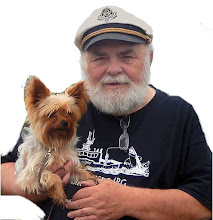Labels
Support Our Sealers
Harvesting seals is a necessary evil, like harvesting cattle is a necessary evil.
Tuesday, January 31, 2012
Seal hunt doubtful this year
1:34 PM | Posted by
Gary LeDrew |
Edit Post
SYDNEY — A grey seal hunt on Hay Island off Cape Breton is looking doubtful this year because of a lack of markets, says a spokesman for the sealers.
Topics : Northeast Coast Sealers Co , Canadian Food Inspection Agency , Canadian Press , China , Cape Breton , Hay Island
Robert Courtney said Monday the Cape Breton sealers were hoping to see markets for grey seal meat in China but a proposed trade agreement opening the door for the export of Canadian seal products hasn’t happened.
“It don’t look good without the meat market,” said Courtney, president of the North of Smokey/Inverness South Fishermen’s Association.
“The people in China want it but the border isn’t open and we can’t get it there.”
Last January, then-Fisheries Minister Gail Shea announced from Beijing that she had landed a trade agreement to sell Canadian seal meat in China, but bureaucrats with Fisheries and Oceans and the Canadian Food Inspection Agency have confirmed the Chinese have yet to sign off on the agreement, the Canadian Press reported in November. Frank Pinhorn, executive director of the Canadian Sealers Association, said at the time Fisheries and Oceans may have promised too much, too soon but he’s confident a final deal is in the works.
Courtney said he had discussed possible markets for the grey seals with last year’s buyer, the Northeast Coast Sealers Co-operative in Newfoundland.
He said there isn’t much time for any upswing in his potential markets since the Hay Island hunt usually begins and ends over a short period of time in February.
“I doubt there will be anything,” he said.
Last February, the sealers hunted about 80 animals out of an allowable allocation of 1,900 on Hay Island. A group of Cape Breton sealers also hunted 115 grey seals on Henry Island and Saddle Island in the Gulf of St. Lawrence.
Courtney expected to know more after an Atlantic sealers advisory meeting Feb. 13-14 in Halifax.
Shannon Lewis, executive director of the Northeast Coast Sealers Co-operative, said it’s a bit early to say for sure, but by the time it figures out its purchase plans for this year, it will probably be too late to participate in the grey seal harvest, which is usually ahead of other seal hunts in Atlantic Canada.
Rebecca Aldworth of the Humane Society International/Canada, which has travelled to Hay Island to document and oppose the hunt, said it is clear people in China are against becoming a dumping ground for seal products the rest of the world doesn’t want to buy.
Aldworth said there are also concerns the way seal carcasses are processed doesn’t meet standards in China for food processing.
She hoped to see Ottawa buy up the licences of sealers.
“I think, frankly, the grey seal hunt has been over for many years,” she said.
Aldworth said she has heard that there is a rumour there may still be a buyer for the grey seal products.
“I wouldn’t necessarily bank on it not going ahead,” she said. “We are prepared for it to go ahead, and we will be there if it does.”
Hay Island is a rocky landscape that is part of the Scatarie Island Wilderness Area off Cape Breton.
Fisheries and Oceans has set a total allowable catch for 2012 of 60,000 grey seals throughout the Atlantic region and a quota for Hay island of 1,900, saying both numbers are a rollover from last year.
The 2012 season start dates for sealing fleets will be determined through consultation with Fisheries and Oceans scientists, according to the website. The commercial juvenile grey seal hunt usually runs from early February until early March, mainly along the eastern shore of Nova Scotia and in the southern Gulf of St. Lawrence.
Courtney wondered what happened to a proposed large-scale cull of grey seals.
“That isn’t happening either because none of the people in Ottawa has stepped up to the plate to make it happen.”
He suggested weather conditions this winter look favourable to the survival of grey seal pups on Hay Island and without a hunt, the population is sure to increase.
The Fisheries Resource Conservation Council has recommended a grey seal cull in the southern Gulf of St. Lawrence in which about 73,000 animals would be killed in the first year and another 70,000 over the next four years.
chayes@cbpost.com
Subscribe to:
Post Comments (Atom)

0 comments:
Post a Comment